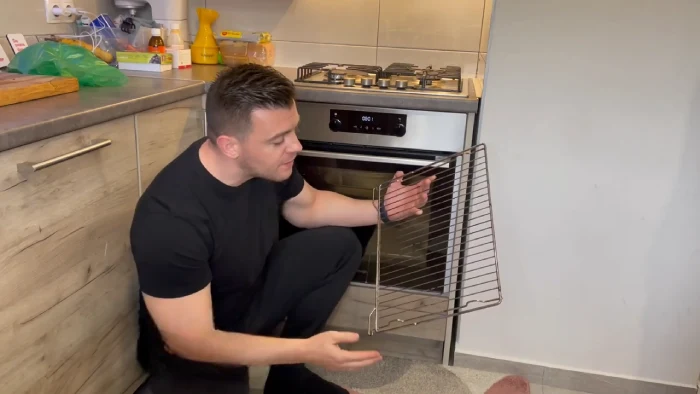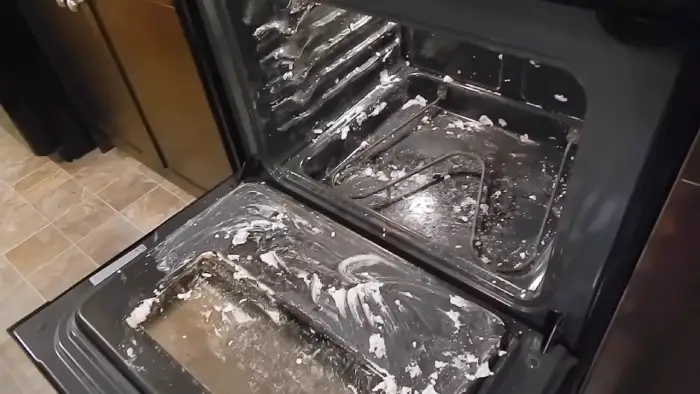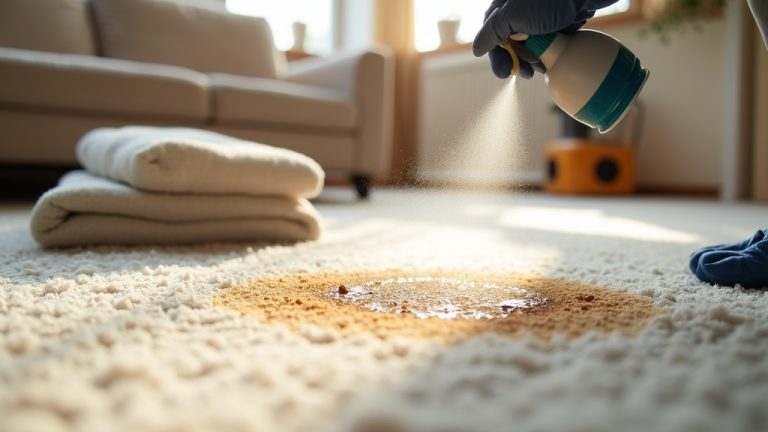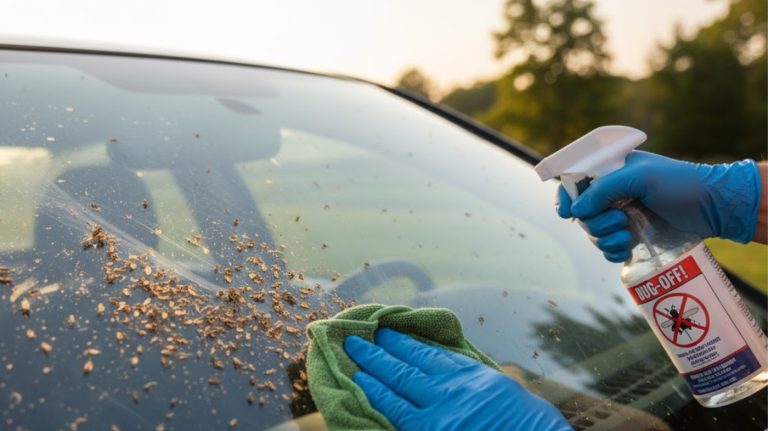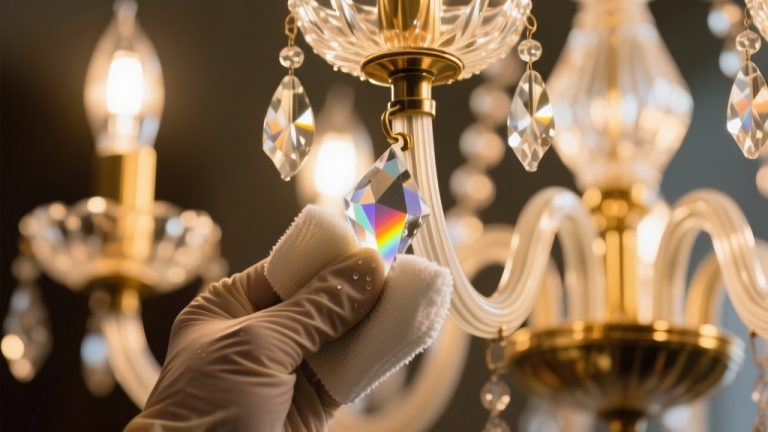Can You Leave Oven Racks in During Self Cleaning: Smartly Move?
Self-cleaning ovens work by heating the oven to high temperatures, which turns grease and grime inside into ash that can be easily wiped away after it cools. However, many people are uncertain whether they should leave their oven racks in during this self-cleaning process.
Although leaving your oven racks in during a self-clean cycle may seem like an easy solution, there are certain risk factors you need to consider before making this decision. Leaving oven racks in a self-cleaning oven during cleaning can lead to material melting, wrapping, or even fire hazards.
Today we will explore whether leaving oven racks inside during a self-clean is safe and effective for maintaining a clean oven. We’ll also discuss alternative methods you can use if leaving them in isn’t recommended. So continue reading!
Potential Risks of Leaving Oven Racks In During Self-Cleaning
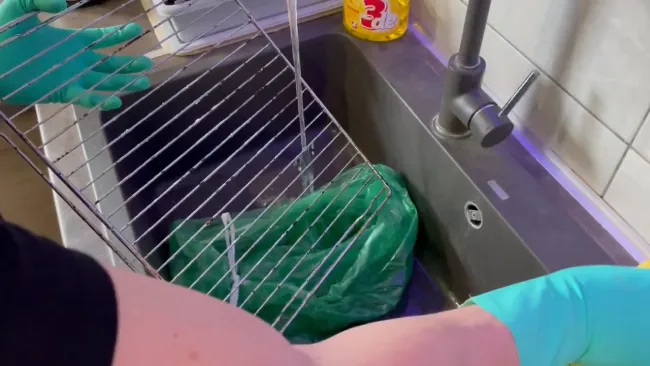
Self-cleaning ovens use high temperatures to remove grime from the interior walls of the oven. However, the metal may become susceptible to:
Metal Melting
One of the most concerning is the possibility of melting. This is because many oven racks are made from materials that simply cannot withstand high temperatures during a self-cleaning cycle.
Also, melted metal can release harmful fumes into your home, putting you at risk of respiratory issues. To avoid these potentially dangerous outcomes, it’s always best to remove your oven racks before starting a self-cleaning cycle.
Warping
Another potential risk of leaving oven racks inside during self-cleaning is warping. When an oven heats up to such high temperatures, its metal components can begin to bend and twist due to thermal expansion.
This phenomenon occurs when materials expand as they absorb heat energy, causing them to change shape or size. In the case of oven racks, this warping can damage not only the rack itself but also the interior of your oven.
A warped rack may no longer fit properly into its designated slot, potentially blocking airflow and hindering proper cooking performance. Furthermore, a warped rack could scratch or scrape against the walls or door of your oven, leading to unsightly marks or even structural damage over time.
Fire Hazards
It’s also a fire hazard to leave oven racks in during self-cleaning. Any food residue or grease left on the racks can ignite when an oven goes through a high-temperature cleaning cycle. This is especially true for older ovens or those with built-up grime not regularly cleaned.
The intense heat generated during self-cleaning can also cause other materials inside the oven to catch fire if they come into contact with heating elements or hot surfaces. These materials may include paper or plastic items accidentally left inside the oven, such as baking sheets, aluminum foil, or utensils.
Manufacturer Recommendations When Cleaning a Self-Cleaning Oven
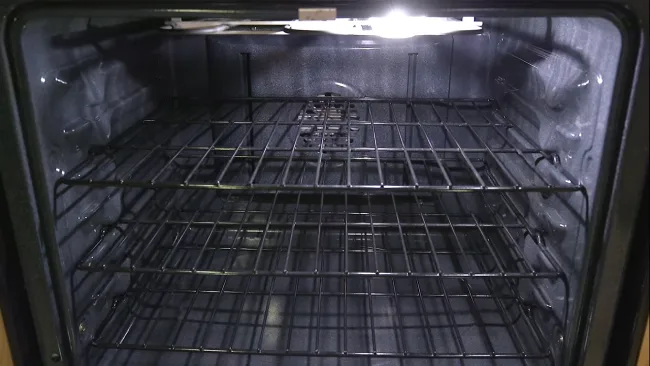
As discussed previously, if the racks are not designed to withstand high temperatures or have any plastic components, they could melt or warp during self-cleaning.
Moreover, food remnants or grease on the racks could ignite and cause a fire. To prevent these risks from occurring, it is essential to follow manufacturer recommendations when using the self-cleaning feature.
Most manufacturers advise removing all oven racks before starting the self-cleaning cycle. This allows for proper air circulation throughout the oven cavity and reduces the risk of damage caused by high temperatures.
Heat Tolerance of Different Self-Cleaning Oven Racks Materials
You must consider the heat tolerance of different materials before leaving oven racks in a while running the cleaning cycle. Metal racks are commonly used in ovens, and their ability to withstand high temperatures.
Conversely, plastic or rubber items should be removed from the oven before starting a self-cleaning cycle, as they may melt or release toxic fumes when exposed to high temperatures.
Glassware has varying degrees of heat resistance depending on its quality and thickness. While some glass dishes can handle high temperatures, others may shatter or crack under stress caused by extreme heat.
Check out the following table for information about the heat tolerances of various materials you might want to self-clean.
| Material | Maximum Temperature Tolerance |
| Stainless Steel | 1450°F (788°C) |
| Aluminum Foil | 1220°F (660°C) |
| Ceramic Dishes | 1475°F (802°C) |
| Pyrex Glassware | 932°F (500°C) |
| Plastic/Rubber Items | Not recommended |
Safety Precautions to Take Before Running Self Cleaning With Oven Racks
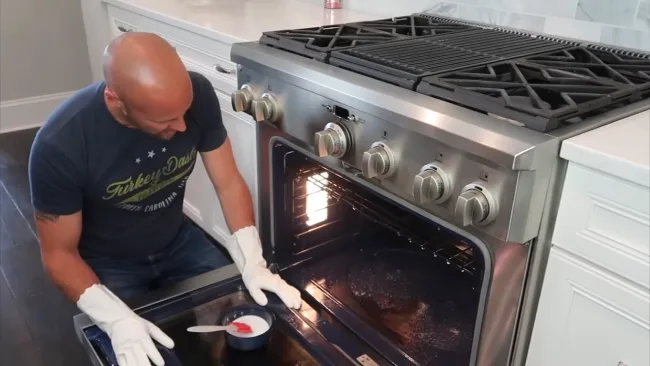
Before running self-cleaning with oven racks, it is essential to take certain precautions to ensure safe and effective cleaning. These steps are simple, but they can save you from damaging your oven or causing harm to yourself.
#1 Remove Food
One important precaution to take before running self-cleaning with racks is to remove any food or debris from the oven. This is crucial because these materials can potentially catch fire during the high temperatures of the self-cleaning process, causing damage to your oven and possible harm to yourself or others in the area.
#2 Check Seals
Another essential precaution before running self-cleaning is to check the seals on your oven door. These seals are designed to contain the extreme heat generated during self-cleaning, preventing them from escaping into your kitchen and potentially causing harm or damage.
Over time, these seals can wear down or become damaged, compromising their ability to keep heat in the oven. This can lead to issues like smoke or fumes entering your home and potential fires if left unchecked.
Cleaning Self-Cleaning Oven Racks Separately
While self-cleaning ovens are convenient, it is not recommended to leave oven racks inside the appliance during a cleaning cycle. It is also important to note that leaving debris on the racks can result in smoke or even fire during cleaning.
To clean your oven racks separately, first remove them from the oven and allow them to cool down completely. Once cooled, you can use various methods such as soaking them in hot soapy water for several hours or using a commercial oven cleaner specifically designed for cleaning racks.
Alternative Cleaning Methods For Self-Cleaning Oven Racks
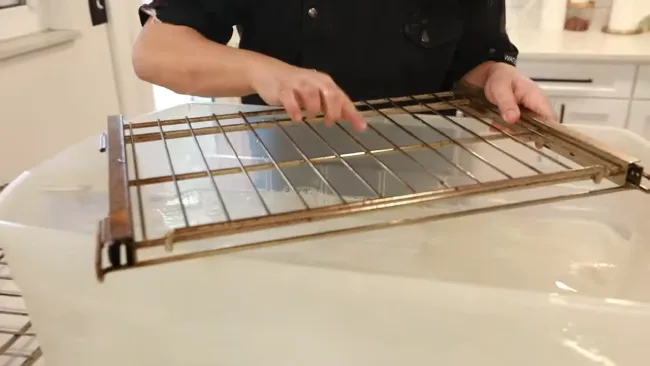
With regular use oven racks tend to accumulate a lot of grime, grease, and food residues that can be quite difficult to clean. That’s where alternative cleaning ways for self-cleaning oven racks come in handy.
#1 Handwashing
This is an effective alternative method for cleaning oven racks. It involves using dish soap, hot water, and a scrub brush to remove the grime and grease on the racks.
To clean self-cleaning oven racks using handwashing, you’ll need to remove the racks from the oven and place them in a bathtub or a large sink. Fill the tub or sink with hot water and add dish soap to create suds. Then, scrub the racks with a scrub brush until they’re clean, and rinse them with hot water.
This method suits people who prefer using natural cleaning agents and don’t want to use harsh chemicals.
#2 Dryer Sheets
These may not be a conventional method for cleaning oven racks, but they’re highly effective. They work by loosening the grime on the racks, making cleaning much easier.
To use this method, you’ll need to place the oven racks in a large garbage bag and add a few dryer sheets. Seal the bag and leave it overnight. Remove the racks from the bag the next day and wash them with hot water and dish soap.
This method is convenient, cost-effective, and ideal for people who may not have access to other cleaning agents.
#3 Soap Scrubbing
Soap scrubbing is another effective alternative method for cleaning self-cleaning oven racks. It involves using dish soap and hot water.
To clean oven racks using soap scrubbing, mix baking soda, dish soap, and hot water to create a paste. Then, apply the paste to the oven racks and let it rest for at least 30 minutes.
Finally, rinse the racks with hot water using a steel wool pad or a scrub brush. This method is highly effective, and the baking soda helps to remove tough stains.
How often should I clean self-cleaning oven racks?
Cleaning a self-cleaning oven rack should be done regularly. Experts recommend cleaning your oven racks at least four times a year.
This frequency of cleaning is necessary to maintain optimal performance and avoid any buildup of substances such as grease, grime, and food residue that may impede the safe and efficient use of your oven.
Regular cleaning will ensure that your oven remains hygienic and the racks remain in good condition, extending their lifespan.
Can I clean a self-cleaning oven rack with steel wool?

It is possible to clean self-cleaning oven racks with steel wool. Steel wool is an abrasive material that removes tough stains and residue from oven racks. However, it is important to be careful when using steel wool as it may scratch or damage the finish of the racks.
You should use a mild detergent, warm water, and a sponge or cloth to clean the racks, followed by steel wool for tougher stains and residue.
Can I use Dawn dish soap to clean self-cleaning oven racks?
Dawn dish soap can be used to clean self-cleaning oven racks. To clean your oven racks effectively using dish soap, add ¼ cup of Dawn dish soap to a bathtub or sink filled with warm water and soak the racks for a few hours.
After soaking, scrub the racks with a soft brush or sponge, then rinse thoroughly with clean water and dry with a soft cloth. This process should remove any residue, grease, or grime, leaving your oven racks clean and shiny.
But remember, the amount of dish soap used should not be excessive, as it may cause a buildup of suds that could damage your oven.
Protect Your Oven During Self-Cleaning: Remove Racks & Understand Heat Tolerance
Leaving self-cleaning oven racks in during cleaning can pose potential risks and damage both the oven and the racks. Ensure you refer to manufacturer recommendations for specific guidelines on whether or not to remove them before running the self-cleaning cycle.
Also, understanding the heat tolerance of different materials and taking the necessary precautions beforehand can prevent accidents or harm. Cleaning the racks separately by soaking them in a solution or scrubbing them with baking soda and vinegar is recommended if you have to remove them for easier cleaning.
By following the steps mentioned above, you can maintain oven functionality while keeping oven racks clean and undamaged.

